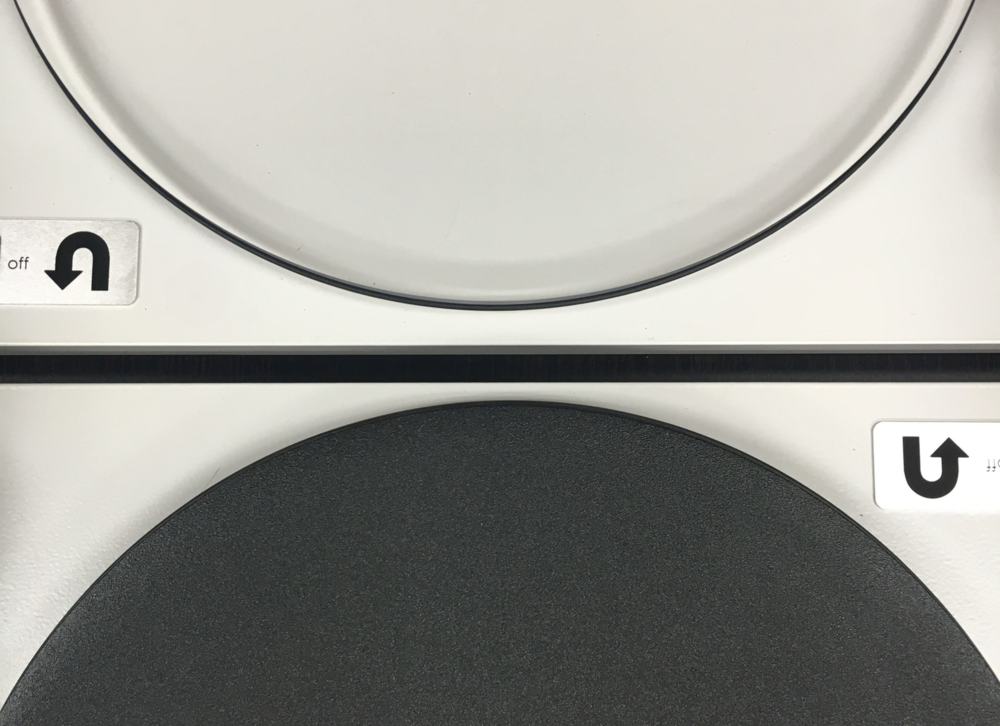Choosing a turntable platter: MDF or acrylic?
A quick, no-BS explanation of the acoustic differences between our platters.

Well, this is our first blog post. It’s been a long time coming. So without further delay, let's just jump right in with one of the most common questions we receive. What is the difference between the basic MDF platter and the acrylic platter?
First, some basics. The platter is the spinning surface that the record is placed on. It is an important turntable component, and plays a big role in maintaining speed consistency and preventing unwanted vibrations from reaching the stylus. The Orbit comes with the choice of either a basic MDF platter or an acrylic platter. MDF (medium density fiberboard) is a wood composite material made by binding wood fibers together with heat and pressure. Acrylic is a solid transparent plastic, often known by brand names like Plexiglass. Both materials are stable and consistent, which makes them great for audio equipment. Both of our platters are 5/8" thick and machined from a solid piece of material. But acrylic is denser and less resonant, which provides some advantages.
But what does this all mean for my ears?
-
Better speed consistency. Because acrylic is denser than MDF, the acrylic platter is a full pound heavier. This additional mass gives the platter more inertia, which results in better speed consistency. To be precise, the acrylic platter has 0.125% wow & flutter compared to 0.175% for MDF.
-
Cleaner and more detailed sound. Acrylic is great for minimizing unwanted vibrations thanks to its relatively high density and low stiffness. The combination of these two mechanical properties allow the platter to trap and dissipate vibrational energy that would otherwise creep into playback. This results in improved detail and clarity from your records.
The acoustic differences between the two platters are subtle but noticeable. It is worth mentioning that your cartridge has a much larger impact on playback quality/character than the platter material you choose. So if you upgrade one thing on your table, we generally recommend starting with the cartridge.
No matter which material you choose, all of our platters go through the same comprehensive quality control process prior to shipping. This includes wow & flutter and frequency deviation measurements as well as a qualitative listening test. We also use a digital microscope to make sure there is no platter wobble. And, at the end of the day, if you start with the basic MDF you can easily upgrade to the acrylic platter down the road.
Please leave comments and questions below. If you are interested in more content like this, tell us! If you aren't, tell us what you would like to see! We are excited to get this whole blog thing rolling.